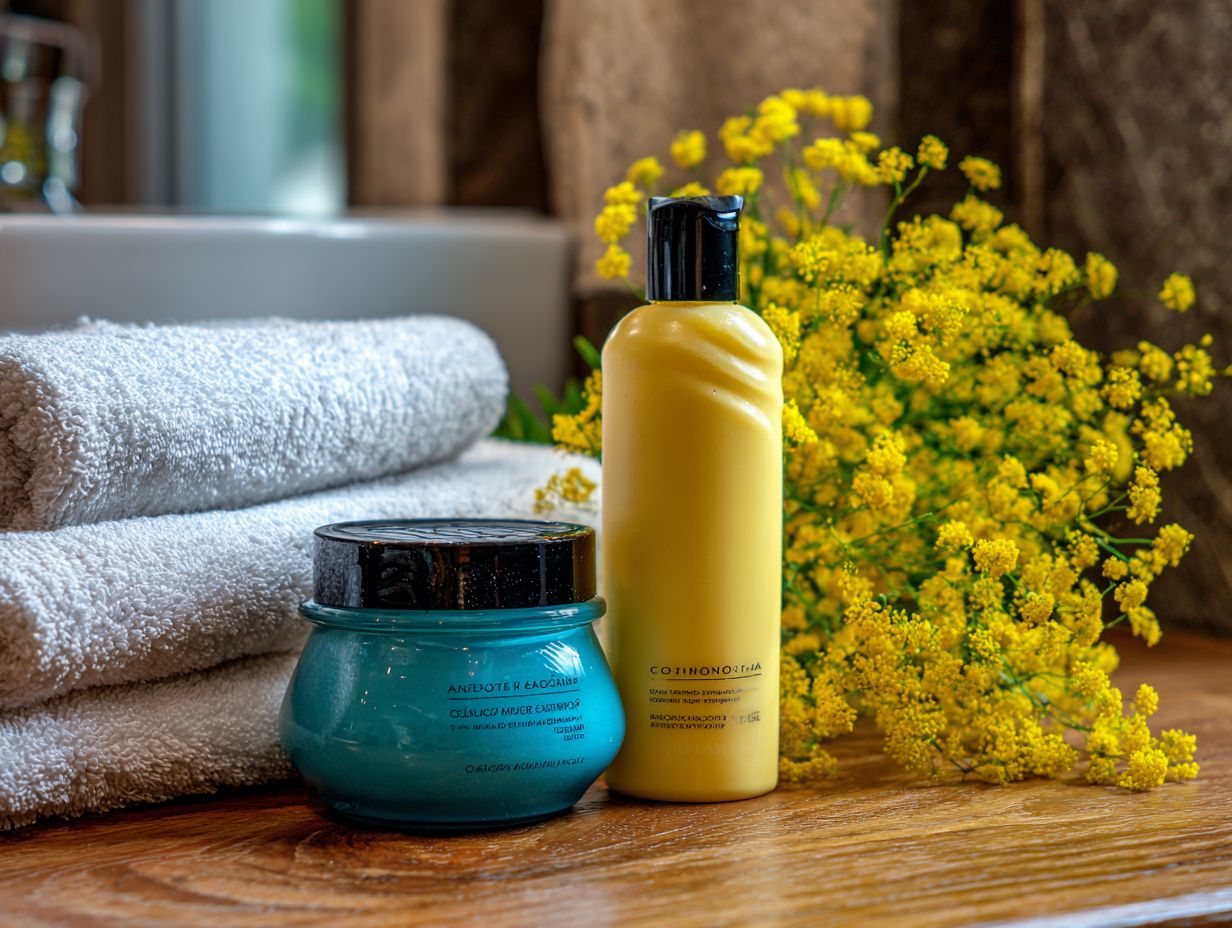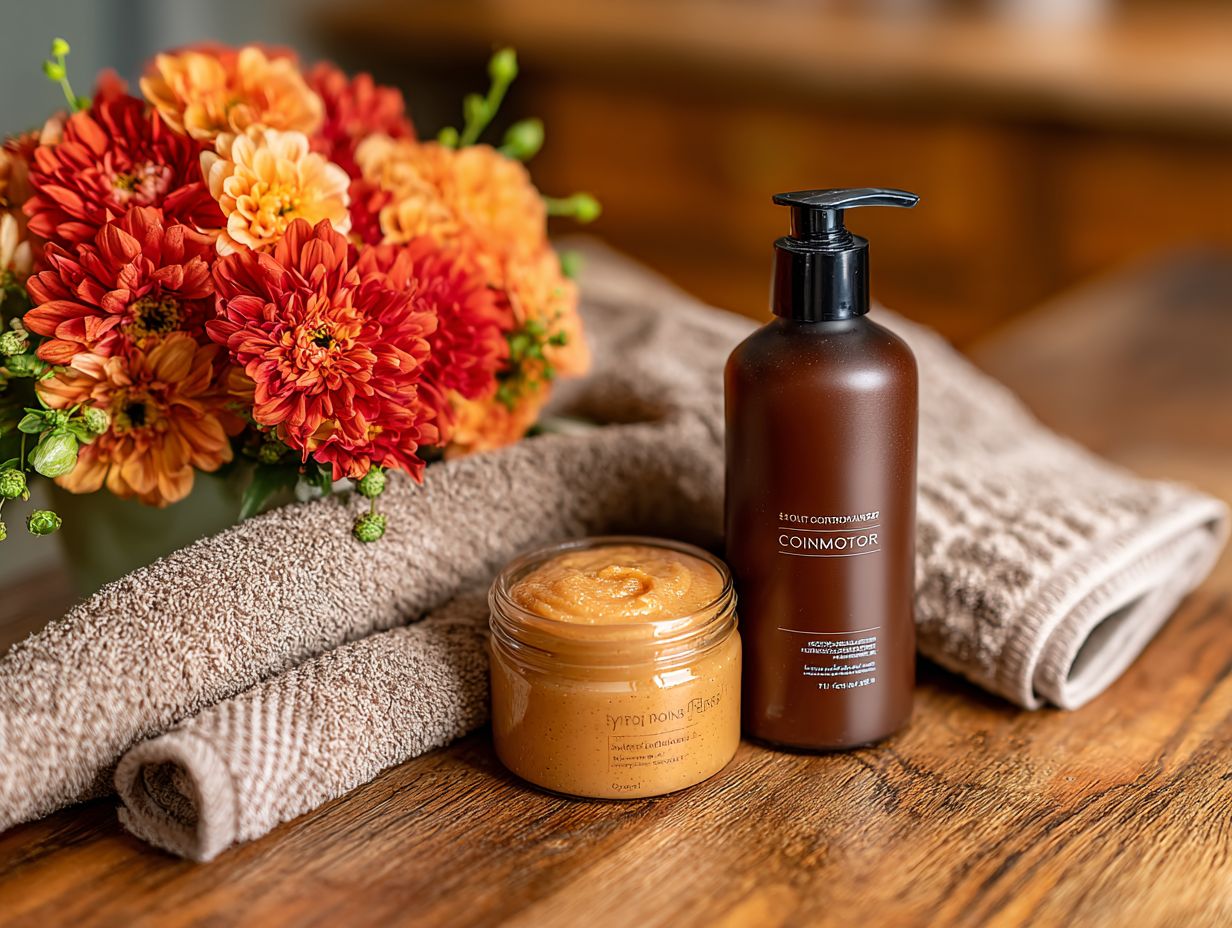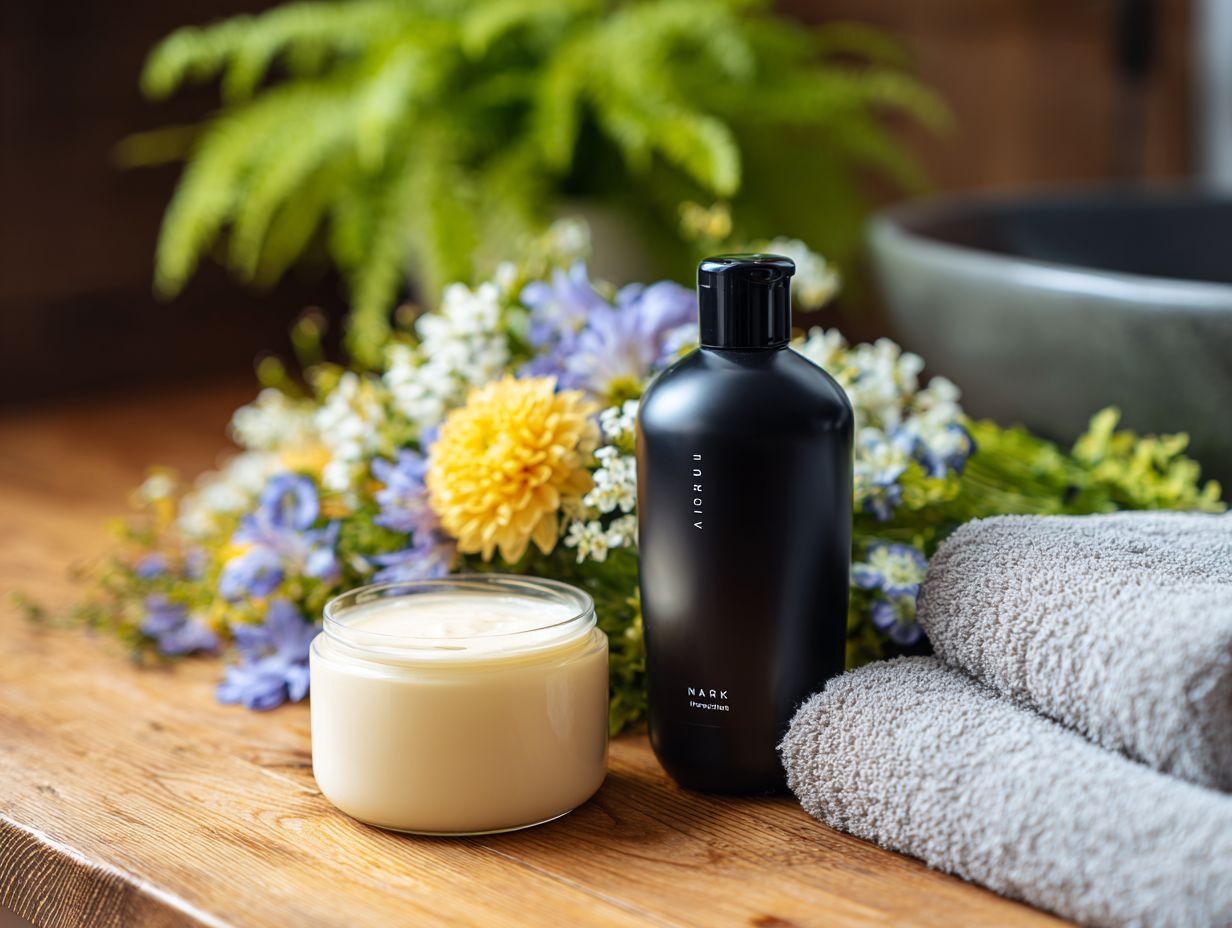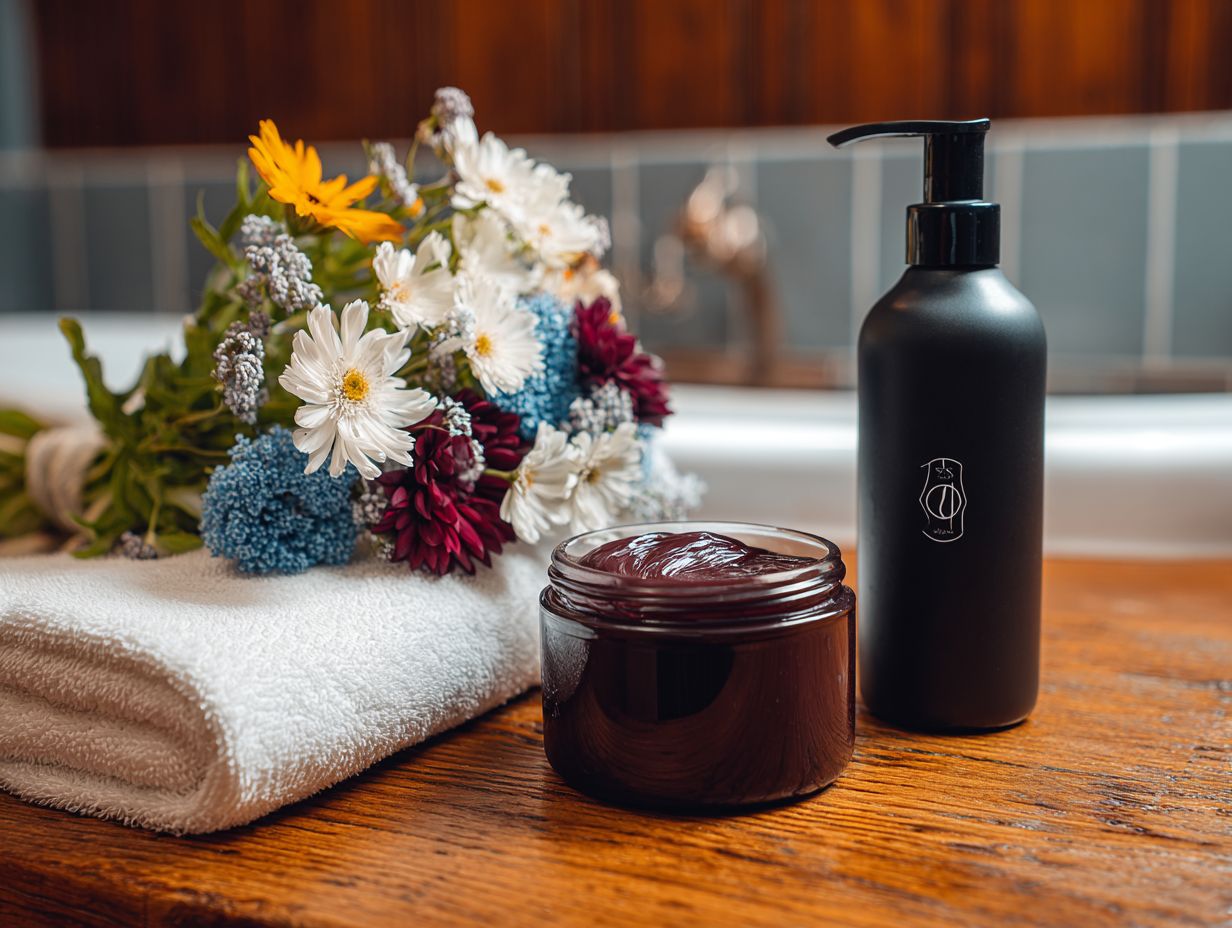Introduction
 When it comes to hair care essentials, understanding the difference between a hair mask and a hair conditioner can transform your routine, much like Blake Lively’s iconic looks featured in Vogue. While both serve as vital hair treatments, each offers unique benefits tailored to your hair’s needs. In this article, we’ll explore these differences, helping you decide which professional haircare products, like those from Blake Brown Beauty, best suit your hair type for optimal results.
When it comes to hair care essentials, understanding the difference between a hair mask and a hair conditioner can transform your routine, much like Blake Lively’s iconic looks featured in Vogue. While both serve as vital hair treatments, each offers unique benefits tailored to your hair’s needs. In this article, we’ll explore these differences, helping you decide which professional haircare products, like those from Blake Brown Beauty, best suit your hair type for optimal results.
Key Takeaways:
What Are Hair Masks?
Hair mask benefits include deep conditioning and intense hydration for dry hair.
I utilize hair masks as intensive treatments that are specifically formulated to penetrate the hair shaft and deliver deep conditioning to damaged or dry hair.
Definition and Purpose
A hair mask is a thicker, more concentrated formula compared to regular conditioners, specifically designed to deliver high concentrations of nourishing ingredients for deep treatment. This treatment effectively penetrates the hair shaft, often repairing damage caused by heat styling and environmental factors.
In contrast to regular conditioners, which I typically use during every wash, I reserve hair masks for weekly use or as needed, allowing ample time for the ingredients to work their magic.
For example, I might opt for:
- a protein mask to strengthen brittle hair,
- or a hydrating mask infused with oils like argan or coconut for an intense moisture boost.
For optimal results, I apply them after shampooing, using a generous amount and leaving the mask in for 10 to 30 minutes before rinsing thoroughly.
Key Ingredients
Consumer reports often highlight the importance of nourishing ingredients like argan oil and fatty acids for healthy hair.
I often incorporate common ingredients in hair masks, such as natural oils like argan oil, fatty acids, and extracts like white tea, which offer intense hydration to restore hair health.
For instance, I find that Camellia Oil is particularly effective due to its deep conditioning properties, making it an excellent choice for dry or damaged hair, enhancing hair texture and health. When I blend it into a mask, it enhances both softness and shine.
Additionally, the protein-rich Fusion extract strengthens hair shafts, helping to reduce breakage.
To create an effective mask, I combine Camellia Oil with Fusion and add a few drops of essential oils, such as lavender, for extra nourishment and a soothing aroma.
I’ve noticed that applying this mask weekly can significantly improve my hair’s texture and manageability.
What Are Conditioners?
Conditioners are part of my daily hair care regimen, providing lightweight hydration and frizz control.
Conditioners are essential hair care products that I rely on to maintain moisture balance, smooth frizz, and detangle hair.
By incorporating conditioners into my routine, I find that they significantly enhance manageability, ensuring my hair remains healthy and easy to style.
Definition and Purpose

Conditioners are generally lighter than hair masks and function as daily moisturizers to help manage frizz and enhance the overall appearance of my hair. They typically contain ingredients such as silicones and oils, which provide a protective outer layer, making my hair smoother and more manageable.
In contrast, hair masks are richer and formulated for deeper penetration, specifically targeting issues like dryness or damage. For instance, while I might use a daily conditioner with coconut oil for lightweight moisture, a weekly mask could feature argan oil and protein for intensive repair.
Incorporating both products into my hair care routine can optimize hair health and address specific hair needs and goals. I apply conditioner after every wash and use a mask weekly to achieve the best results.
Key Ingredients
I find that conditioners often contain lightweight ingredients such as silicones and proteins, which provide hydration without weighing my hair down or causing product buildup, making them ideal for various hair types.
Two key ingredients that stand out in effective conditioners are Keratin and Hydrolyzed Silk.
Keratin, a protein that naturally occurs in hair, plays a vital role in repairing damage by filling in gaps, ultimately making hair stronger and more resilient.
On the other hand, Hydrolyzed Silk enhances smoothness and shine, delivering a silky feel while minimizing frizz, and is an essential part of my hair maintenance routine.
When selecting a conditioner, I prioritize products that include these ingredients, particularly if my hair tends to be dry or damaged.
Brands like Moroccanoil and Joico often feature these beneficial components, making them excellent choices for promoting healthier hair.
Differences Between Hair Masks and Conditioners
Understanding the differences between hair masks and conditioners is essential for me to select the appropriate product that aligns with my hair needs and goals.
Application Methods
Hair masks are typically applied generously and are designed to be left on for an extended period, whereas conditioners are generally used briefly during each wash for regular maintenance.
To maximize the benefits of hair masks, I recommend applying them to damp, towel-dried hair and using a wide-tooth comb to ensure even distribution. It’s advisable to leave the mask on for at least 15 to 30 minutes; for deeper conditioning, I often suggest wrapping the hair in a warm towel to enhance absorption.
In terms of conditioners, I apply them to wet hair after shampooing, focusing on the mid-lengths and ends, and leaving it on for about 2 to 5 minutes. I integrate hair masks into my routine once a week while using conditioner every time I wash my hair, which helps maintain healthy, hydrated locks.
Frequency of Use
I find that while conditioners can be used daily, hair masks are generally more effective when applied weekly to achieve optimal results in hair repair and hydration.
To establish an effective treatment schedule, I consider my hair type.
- For dry or damaged hair, I use a deep conditioning mask once a week, concentrating on the ends.
- If my hair is normal, a bi-weekly application typically suffices.
- For oily hair, I prefer a lighter mask every two to four weeks, being careful not to overload my scalp.
I keep track of this schedule in a planner or app to maintain consistency. Additionally, incorporating tools like hair serum post-treatment can significantly enhance moisture retention and vitality.
Benefits of Hair Masks

Hair masks are a cornerstone of beauty innovation in the hair care industry, offering unparalleled intensive care.
I find that hair masks offer intensive care that can significantly improve hair repair, transforming dry, damaged locks into healthy tresses within just a few weeks.
For optimal results, I recommend using a hair mask once a week. For instance, products like Olaplex No. 3 ($28) are excellent for restoring internal strength, while SheaMoisture’s Manuka Honey Mask ($10) provides intense hydration.
To enhance the effects, I apply the mask to damp hair and cover it with a warm towel, which allows the ingredients to penetrate more effectively. Many users report an increase in moisture retention by up to 40% after just one month of consistent use.
Additionally, pairing hair masks with regular trims can further enhance shine and manageability, creating a comprehensive approach to overall hair health.
Benefits of Conditioners
Conditioners are excellent for maintaining daily hair health, ensuring my hair remains manageable and styling products are effective.
Conditioners provide consistent moisturizing effects, ensuring that my hair remains hydrated and manageable, which is essential for my daily styling and maintenance routine.
Research indicates that using a conditioner can reduce frizz by up to 70%, making my hair significantly easier to style. For instance, products that contain silicones help to smooth the hair cuticle, creating a protective barrier while enhancing shine. I often come across user testimonials that highlight how brands like Olaplex and Moroccanoil have transformed their hair texture.
Incorporating a leave-in conditioner after my shower allows for extended hydration that lasts through my styling sessions. To maximize the benefits, I always select a conditioner tailored to my hair type-opting for hydrating formulas for dry hair and lightweight options for finer strands.
Choosing the Right Product for Your Hair Type
Selecting the right hair mask or conditioner is crucial for addressing my specific hair concerns, ensuring that each product aligns with my unique hair type and texture. This is a vital step in achieving my hair goals.
To choose effectively, I begin by identifying my hair type.
For my curly hair, I look for moisturizing masks that contain shea butter or coconut oil, as these ingredients help combat dryness. If my hair were straight, I would opt for lightweight conditioners with ingredients like argan oil, which enhance shine without weighing it down. Since I color-treat my hair, I prioritize products labeled as color-safe, ensuring they include UV filters and antioxidants.
I always make it a point to read reviews and conduct a patch test when trying new brands, as this helps me avoid potential irritation and make informed choices for my hair care.
Frequently Asked Questions
Here we address common user experiences and provide hair styling tips to enhance your regimen, including advice on using a blow dryer and leave-in treatments.
What is the main difference between a hair mask and a conditioner?
The main difference between a hair mask and a conditioner is the level of intensity and nourishment they provide for your hair. Hair masks are more concentrated and are designed to deeply penetrate the hair shaft, while conditioners are lighter and focus on providing surface-level hydration and smoothing.
When should I use a hair mask instead of a regular conditioner replacement from Blake Brown Beauty?

Hair masks are best used when your hair needs a deep treatment, such as when it is damaged, dry, or frizzy. They can also be used as a regular treatment for maintaining healthy hair. Conditioners, on the other hand, should be used after every wash to maintain hydration and smoothness.
Can I use a ULTIMATE REPAIR Mask and ULTIMATE REPAIR Conditioner together?
Yes, you can use a hair mask and conditioner together for an even more intensive treatment. Start by using the hair mask first, leave it on for the recommended time, then rinse it out and follow with a conditioner to lock in the nourishment.
Are there any differences in the ingredients of hair masks and conditioners like those from Blake Lively’s favorite hair care line?
While both hair masks and conditioners contain similar ingredients, hair masks generally have a higher concentration of nourishing and repairing ingredients, such as oils, proteins, and vitamins. They also often contain thicker, heavier ingredients to deeply moisturize and repair the hair.
Can I leave a conditioner like the ULTIMATE REPAIR Conditioner in my hair like a hair mask?
Most conditioners are not designed to be left in the hair for an extended period of time like a hair mask. Leaving a regular conditioner in your hair for too long can actually cause build-up and weigh down your hair. However, there are leave-in conditioners specifically formulated for this purpose.
Which one should I choose – a hair mask or a conditioner from the NAK hair care line?
It ultimately depends on your hair’s needs. If your hair is in good condition and just needs some light hydration and smoothing, a conditioner will suffice. But if your hair is damaged, dry, or in need of extra nourishment, a hair mask will provide the intensive treatment it needs.


